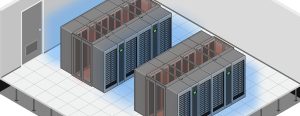Data Center Resources was recently named to Inc Magazine of fastest growing private firms in the U.S. How did we accomplish this in such a tough market? We listened. We spotted trends. We acted.
About a year ago, we noticed changes in what our customers were buying. And having over 300 customers, there was clearly a focus on improving the efficiencies of current installations within a limited budget. As we progressed into the year, we selected addition power equipment suppliers, many of which are not known to the general market. It was their innovation and ability to demonstrate a short ROI that has driven more than 40% of Revenue.
With this in mind, I thought I would share with you what we continue seeing from our customers. We believe this input will be the trend of power for the forthcoming years. Some items you may be aware of, but other items may surprise you or contradict what you are doing. As always, we encourage you to reach out to us with your comments or ideas.
|
Product
|
What’s HOT
|
What’s NOT
|
|
Shorter Power Cords
|
One of the top, lowest cost methods to reduce the heat and improve ventilation in server cabinets and reduce torque on cables.
|
The six power cords required on blade servers. We have seen blade applications decrease in favor of standard 1U and 2U servers
|
|
Medium Density Power Strips (5-8.6kW)
|
Split Phase (L14-30) to support both legacy and next gen hardware (e.g. SMB and Colos).
|
The ROI of Remote Reboot (Switched) is no longer justifying double the cost.
|
|
High Density Power Strips (10-15kW)
|
60A single phase is re-emerging as it provides 10kW on two pole positions.
|
30A three phase is waning as it requires three poles and the Neutral wire (120V) is seldom needed
|
|
Ultra High Density Power Strips (17kW+)
|
Hardwired connections significantly reducing installation time and material costs
|
Conversely, IEC309 Pin and Sleeve (e.g. 60A three phase) remain very expensive.
|
|
Panel Boards
|
400A/208V panels are dominating projects. Requests for 600A distribution panels are increasing (e.g. I-Line).
|
225A/208V is simply becoming obsolete. With 63kW available on 42 poles, its output is no longer suitable to next gen hardware.
|
|
RPPs
|
Small form factor units (400A) that mount at the end of a row of enclosures. Rackbased (e.g. EPDM) models gaining rapid acceptance.
|
Traditional (4) 225A models that consume a floor tile. Poor access and lack of capacity have dated these.
|
|
Distribution
|
300kVA models with Energy Management and Branch Circuit Monitoring. TP1 energy efficient transformers also increasing.
|
The cost of K20 transformers is outweighing the benefits. 500kVA has gone quiet as there is a mismatch to the upstream UPS.
|
|
UPS
|
Real energy efficiency, small foot print and fault-hardened architecture. DCR offers a line with 96% efficiency at 50% load (.90 pf)
|
Old school UPS companies whose designs and power factor are lagging. Off-line operation being passed off as energy efficient!
|
|
Bus Systems
|
600A/400V is the future HD datacenter, but upstream autotransformer limiting a full scale roll-out
|
Smaller bus systems (225 or 400A) are impacted by low power and cost. Forsee these, like RPP, waning further in 2011.
|
|
Total Load per Enclosure
|
Holding steady at 6-7kW on average. Customers spreading out virtualized servers in excess space being created by the use of fewer servers.
|
30kW server loads in one enclosure. The cost to implement and support unrealistic. Customers moving to bigger sites or Colos instead.
|
|
Voltage Standards
|
400V will be the next standard.
|
600V is not being adopted. DC Power is done . . most customers are not buying the claims in whitepapers.
|





